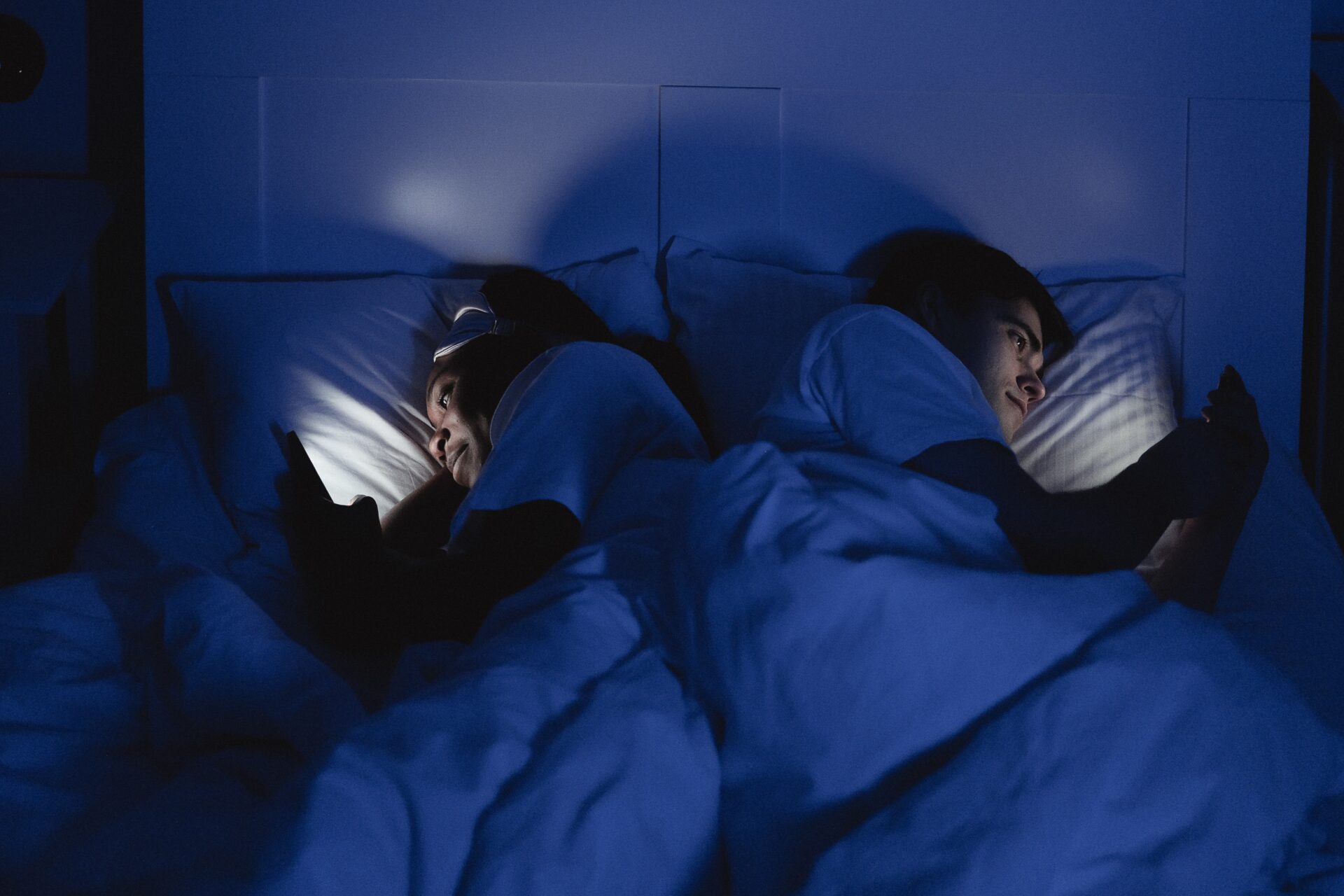
My snoring is waking up my partner. Apart from a CPAP machine, what are the options?
Snoring happens when the muscles and tissues that surround the upper airway (at the back of the nose to the throat region) vibrate during sleep. Snoring can disturb your bed partner’s sleep, and it can be a symptom of the most common sleep-related breathing disorder, obstructive sleep apnoea.
Untreated sleep apnoea can have major adverse health and safety consequences such as obesity, hypertension, stroke, and motor vehicle or workplace accidents.
The potential health risks of snoring are less clear, but are now being investigated and may include cardiovascular disease. But some snorers (and their partners) might worry that treatments could be as disruptive as the snoring itself. So, what are the options?
Crowded airways can cause noisy sleep
The muscles around the upper airway support important functions like breathing, swallowing and speech. These muscles are typically less active during sleep.
Some people have a small and crowded upper airway due to a large tongue, or structures such as the uvula (the small structure that hangs from the back of the soft palate). For these sleepers, changes in airflow during breathing cause these structures and surrounding tissues to vibrate. This results in snoring.
Similarly, in sleep apnoea, the upper airway reduces in size when you fall asleep, but to a greater extent than in people who only snore. There are several reasons some people have sleep apnoea while others merely snore. The main feature is that airflow is markedly reduced or absent for at least 10 seconds, and sometimes for a minute or more, in people who have sleep apnoea.
These disruptions to breathing lower blood oxygen levels and often cause brief awakenings from sleep. These breathing disruptions occur repeatedly throughout the night.
Not surprisingly, people with sleep apnoea can wake up feeling tired and irritable, and have concentration and memory difficulties during the day.

However, if the upper airway can be kept open during sleep with appropriate treatment, many of these symptoms can be reversed.
Worth checking out
Many people with sleep apnoea do not know they have this serious condition. Snoring, combined with symptoms of poor sleep, sleepiness, or witnessed breathing problems during sleep, should warrant a discussion with your GP or specialist and potentially a sleep study.
There are other factors that can cause snoring to develop or worsen. If you suffer from hay fever, airway inflammation may contribute to snoring. Alcohol blocks your nose, making it harder to breathe, and may relax the airway muscles to cause snoring or sleep apnoea.
There is growing evidence snoring alone and/or sleep apnoea may be linked to increased blood pressure and hearing impairment, as well as disrupting your own and your bed partner’s sleep quality.
In extreme cases, snoring can be so loud it exceeds the recommended safe sound limits set by the World Health Organization.
Therapies to improve breathing
As the evidence for harm from snoring alone is currently unclear, therapy is typically not recommended. But there are many potential options for addressing snoring and sleep apnoea. These include:
- continuous positive airway pressure (CPAP) therapy is most commonly used to treat sleep apnoea. A machine delivers air at a specific pressure to the nose and/or mouth via a mask to keep the upper airway open. Newer CPAP models are very quiet and if used regularly, improve breathing and many of the associated symptoms. However, many people require alternative therapies due to inability to tolerate CPAP or personal preference
- a mouthguard, designed to move your jaw forward to increase the size and stability of the airway, is another therapy that can improve breathing and reduce snoring
- upper airway surgery to surgically open up the airways
- weight loss can get rid of excess tissue obstructing airways
- sleeping on your side.
Emerging therapies include surgical implants that electrically stimulate the nerve controlling the tongue muscle to move forward during sleep. However, this doesn’t work for everyone and requires a surgical procedure with associated risks.
Several medications are currently being investigated to restore muscle activity and upper airway stability to treat sleep apnoea.
Finally, some people may benefit from training exercises by speech therapists to strengthen their upper airway muscles to reduce snoring and sleep apnoea.
Personal approach to therapies
The sleep medicine field is working towards a personalised therapeutic approach for sleep apnoea.
Potential technological help has also recently emerged. Some smart watches are now able to monitor oxygen levels as well as sleep duration. Sensors positioned beneath the mattress can also provide an estimate of sleep apnoea severity and snoring frequency. Several apps exist to record snoring during sleep. These non-invasive devices to measure sleep may be helpful to monitor changes to your sleep over time.
If you suspect you have sleep apnoea, or if you have already been diagnosed with it, you should discuss your therapy options with your GP or sleep physician. Resources and education materials are available from reputable sources such as the Sleep Health Foundation and the Australasian Sleep Association, as well as social media support networks to connect with people who are on a similar journey.
If you are interested in participating in research to help us find out more about the different causes and develop new treatments for snoring and sleep apnoea, several research centres, including ours at Flinders University, are seeking research volunteers.![]()
Amal Osman, Research Fellow – College of Medicine and Public Health, Flinders University; Bastien Lechat, Postdoctoral research associate, Flinders University, and Danny Eckert, Director, Adelaide Institute for Sleep Health, Professor, College of Medicine and Public Health, Flinders University, Flinders University
This article is republished from The Conversation under a Creative Commons license. Read the original article.


